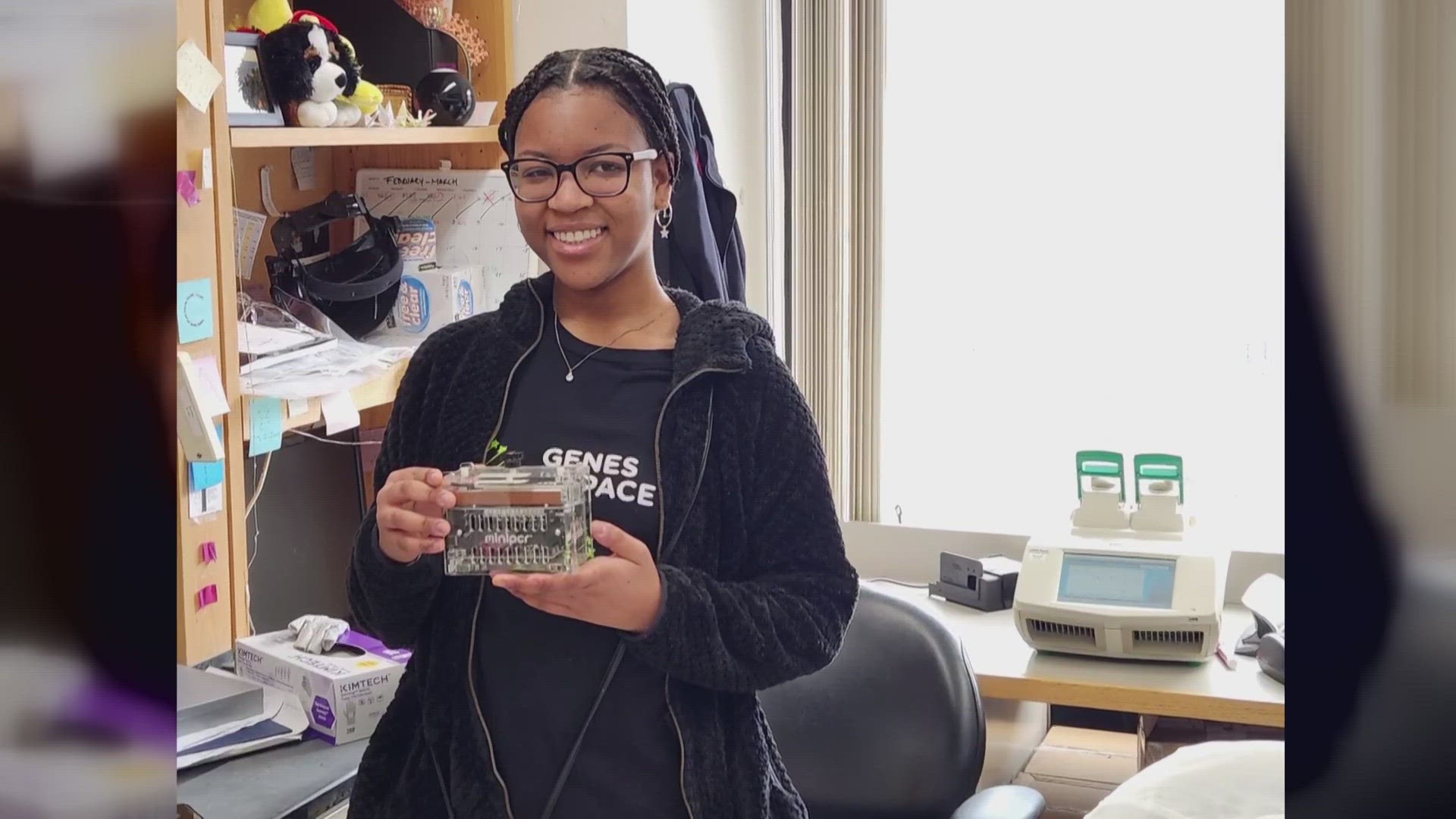GREENSBORO, N.C. — 'Tis the season for graduations, scholarships, and other awards. Those certificates, money, and recognitions are fantastic, but what a North Carolina senior got is out of this world, literally.
The SpaceX Falcon 9 rocket launched Monday morning with the Dragon cargo capsule, bound for the International Space Station. The mission is to re-supply the ISS, but that’s not all.
The rocket also carries a winning science experiment from East Chapel Hill High School’s Pristine Onuoha.
“Knowing I'll get to watch an idea that started in my head become a reality and it gets launched to space, that is so cool to me,” said Pristine Onuoha.
Her idea was among 800 others in the Genes In Space contest. The idea has to be able to be performed with the tool kits astronauts have on the ISS.
“Genes In Space is an annual science competition. It's an ideas competition. Students from grades 7 to 12 submit their ideas for a molecular biology experiment and they take advantage of the environment of space to test how living things react in microgravity and radiation,” said Marc Bliss, of Genes In Space.
Pristine says didn't have a background in space biology, so she started researching the field.
“I learned about the Twin Study, one sent to space and one left on earth and that documented the changed between the two, and of those changes, one really stood out to me and it involved the difference in space of genes,” said Onuoha.
The Twin Study documents astronauts Scott and Mark Kelly and how they aged in a year with one of them being in space and the other on earth.
WHAT IS HER EXPERIMENT ABOUT?
Let's get technical. A telomere is a part of a DNA sequence at the end of a chromosome. As we age, telomeres get shorter. But in space, they get longer.
The question is, why?
“If we developed a tool that would allow you to help measure DNA and detect DNA length differences. So, basically, you have these glowing tubes, and the more DNA you have in the tubes the more they glow. The reason that happens, is because there's more DNA. We figured if you have a long strand of DNA and you compare it to a shorter strand of DNA, the tube with the longer DNA will glow more. That's what will get launched and that's what astronauts will use,” said Onuoha.
She was on NASA TV the morning of the launch talking about the experiment and her future plans. This fall she starts at UNC-Chapel Hill majoring in biology or biochemistry.


